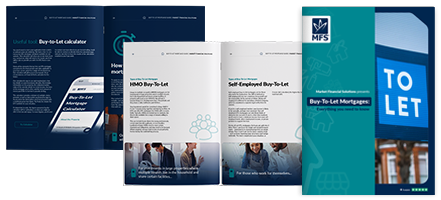
Written by Scott Lord
Deputy Chief Mortgage & Operations Officer – Front End
Market Financial Solutions are a bridging loan and buy-to-let mortgage provider and are not legal, financial, investment or tax advisers. This document is for informational purposes only and does not, and should not be considered, to constitute legal, financial, investment or tax advice or be relied upon by any person to make a legal, financial, investment or tax decision. Therefore, Investors are encouraged to seek appropriate professional advice. The information in this content is correct at time of writing.

A loan-to-value (LTV) ratio is an assessment tool (or calculation) used to measure how much money is being borrowed compared to the value of a property. Lenders use LTV ratios to determine how much risk is involved in the issuing of a loan. Generally, the higher an LTV, the riskier it is for a lender.
For borrowers, “what is the LTV?” will be less of an important question than “why should I care?”. As an LTV rises, so too will repayment costs, as more interest is added onto the loan. Anything above 80% is considered a high LTV, according to MoneySuperMarket. Lower LTVs, those around the 60% mark, should offer reduced interest rates to borrowers. As such, buyers will want to focus on what their LTV is and whether they can bring it down. This is usually done through deposits. The bigger the deposit, the lower the amount needed to borrow will be, lowering long-term costs.
Let’s illustrate how this works in practice: if a buyer has a deposit of £20,000 for a property worth £200,000, they’ll get a mortgage of £180,000 to cover the rest. The deposit covers 10% of the house price, so the LTV is 90%. Should the same borrower be able to build up a deposit of £80,000, their LTV would be 60%. The basic formula for calculating an LTV ratio is to take the mortgage amount, divide it by the value of the property, and multiply the result by 100.
LTVs are a basic element of the mortgage lending process, but have come into focus in recent years. As spending power among buyers diminishes, the market has had to embrace a new way of thinking.
Source: MoneySuperMarket
The question of ‘what is LTV’ has become complicated in recent years
In recent decades, property prices reached unprecedented levels. At the same time however, wages didn’t keep pace. Additionally, inflation rates have jumped. As a result, first-time buyers now need huge deposits to get on the housing ladder.
The average asking price for homes across the UK now sits at a little over £365,000 in mid-2022, according to Rightmove. For this price, a 20% deposit would be £73,000. With the UK average gross salary sitting around £37,000 at the time, it would likely have been difficult even for couples to build up the funds needed. Indeed, research from Rightmove found that solo first-time buyers would need a deposit of almost £75,000 to get on the ladder. Of course, these issues may have only become more prevalent in more recent years. What is the LTV average now across the UK? In mid-2024, the average LTV mortgage held by a first-time buyer was 80%, according to Rightmove.
Where costs rise, more people will end up priced out of the property market altogether. In mid-2022 around 65% of people in Britain owned their own home, down from 71% in 2003. The numbers are worse for younger generations. The flow of new borrowers into the housing market aged 25 to 34 has fallen from a peak of 61% in 1996, to under 40% in 2016. The UK’s 20-somethings are unlikely to care about what is an LTV at all if they can barely build the savings needed in the first place.
Source: BBC, BBC, Wales Online, Metro, Mortgage Solutions, Mortgage Solutions
New LTV initiatives
While buyers may be disheartened, efforts have been made to support the market. In 2021, a government-backed 95% mortgage scheme was launched. This scheme aimed to help people with 5% deposits make their first purchase in the housing market. Under the plans, lenders would receive a guarantee from the state to support the issuance of 95% mortgages for houses worth up to £600,000. However, those are subject to the usual affordability checks. Many high-street lenders even got ahead of this scheme and began offering 95% LTV mortgages without any government support.
Whilst these low deposit mortgages have undoubtedly helped many, their overall effectiveness is questionable. At the end of 2021, just 12,388 government backed 95% mortgages were completed. This was just 5% of all residential mortgages issued in the UK. Also, it should be remembered that higher LTV mortgages tend to be expensive. As such, many buyers may be hesitant to embrace them, even if they do allow them to own property.
Source: Gov.uk, Mortgage Finance Gazette, Fitch Ratings

So, what’s on the horizon for mortgages and LTV ratios?
Mortgage repayments, and a whole host of other costs, rose in recent years as inflation raged on. The Bank of England was forced to raise interest rates in a bid to halt rising costs. But, the base rate was cut recently for the first time since March 2020. Hopefully mortgage costs should be on their way down. But, over 1.5 million homeowners are due to reach the end of fixed-rate mortgage deals throughout 2024. Many of these people will end up on more costly deals over the coming months.
Source: The Telegraph
A positive note
Rising rates will increase costs across all forms of debt. Fortunately, by reviewing certain elements of an LTV calculation, homeowners may be able to lower their bills when the time comes to remortgage. Whether a person needs to remortgage after 2, 5 or even 20 years, they will most likely have built up equity in the hom. This woud allow them to drop into a lower LTV bracket.
For example, those who took out a 90% mortgage two years ago may be able to remortgage at an 85% LTV. There are also some practical steps homeowners can take to lower their LTV band. This includes putting in some of their own money at the point of remortgaging (cutting how much needs to be borrowed) or pushing for higher house valuations.
Source: Money Saving Expert, Which?
The Complete Guide to
Buy-to-Let Mortgages
Everything you need to know
- Fundamentals
- Different mortgage types
- Useful tools
- Industry stats & more





